Abstract
The minimal inhibitory concentrations of 30 antibiotics were determined by the agar dilution method for 17 penicillinase-positive and 50 penicillinase-negative strains of Neisseria gonorrhoeae. The latter included 42 strains that were penicillin susceptible (pen S) (minimal inhibitory concentration, <0.125 μg/ml) and 8 strains with intermediate resistance to penicillin (pen I; minimal inhibitory concentration, 0.125 to 0.5 μg/ml). Two penicillinase-resistant penicillins (methicillin and nafcillin) were inhibitory for penicillin-resistant (pen R) strains. Three new cephalosporins (cefuroxime, cefamandole, cefaclor) and a cephamycin (cefoxitin) were bacteriostatic (minimal inhibitory concentration ≤0.8 μg/ml) for 90% of pen S, pen I, and pen R strains. Pen I strains were more resistant than pen R strains to 6 of 13 cephalosporins. Rifampin, erythromycin, spectinomycin, chloramphenicol, and the tetracyclines were inhibitory for both pen S and pen R strains. The minimal bactericidal concentrations of cefuroxime, cefamandole, cefaclor, and cefoxitin were measured for 17 pen R strains and eight pen I strains by serial dilution of the antibiotics in Trypticase soy broth supplemented with 1% Iso VitaleX and 1% hemoglobin. All tubes were subcultured after overnight incubation at 37°C. Cefuroxime and cefoxitin were bactericidal at low concentrations (minimal bactericidal concentration, ≤1.0 μg/ml) for 16 of 17 pen R strains and 6 of 8 pen I strains.
Full text
PDF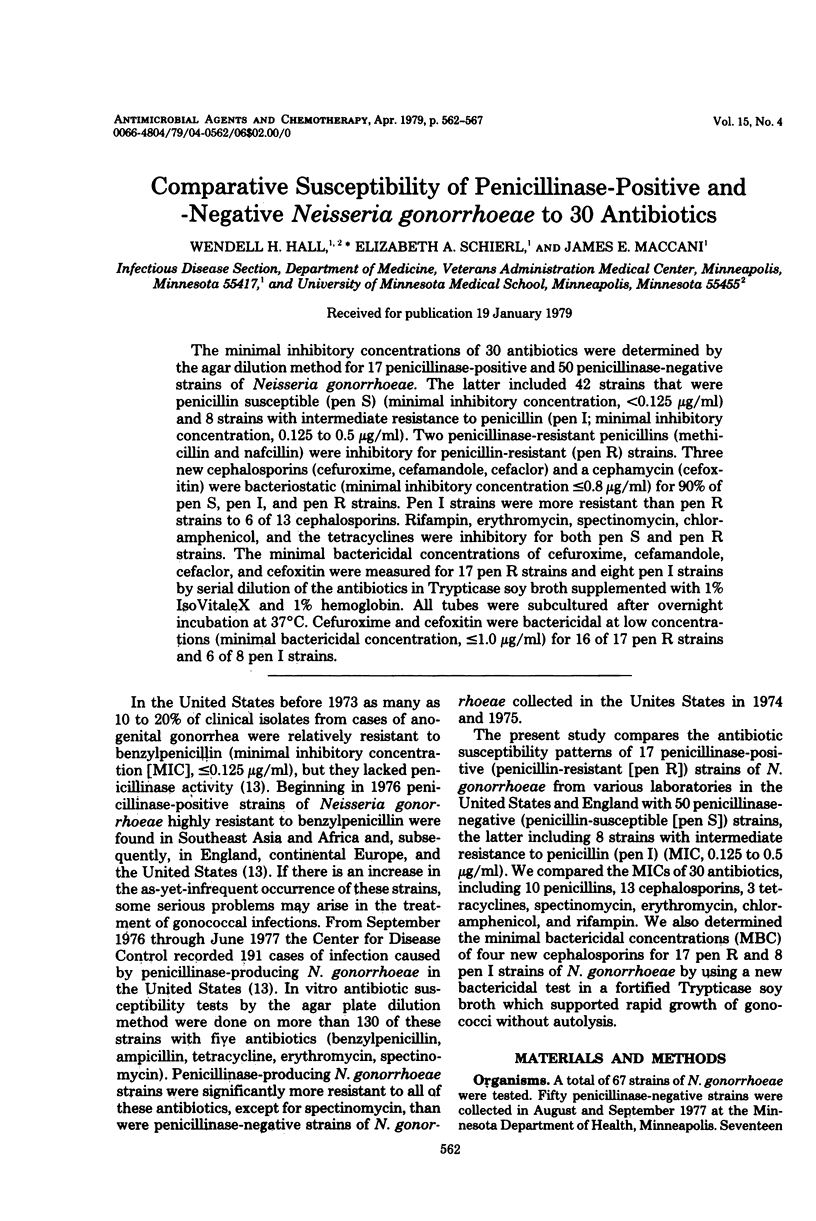
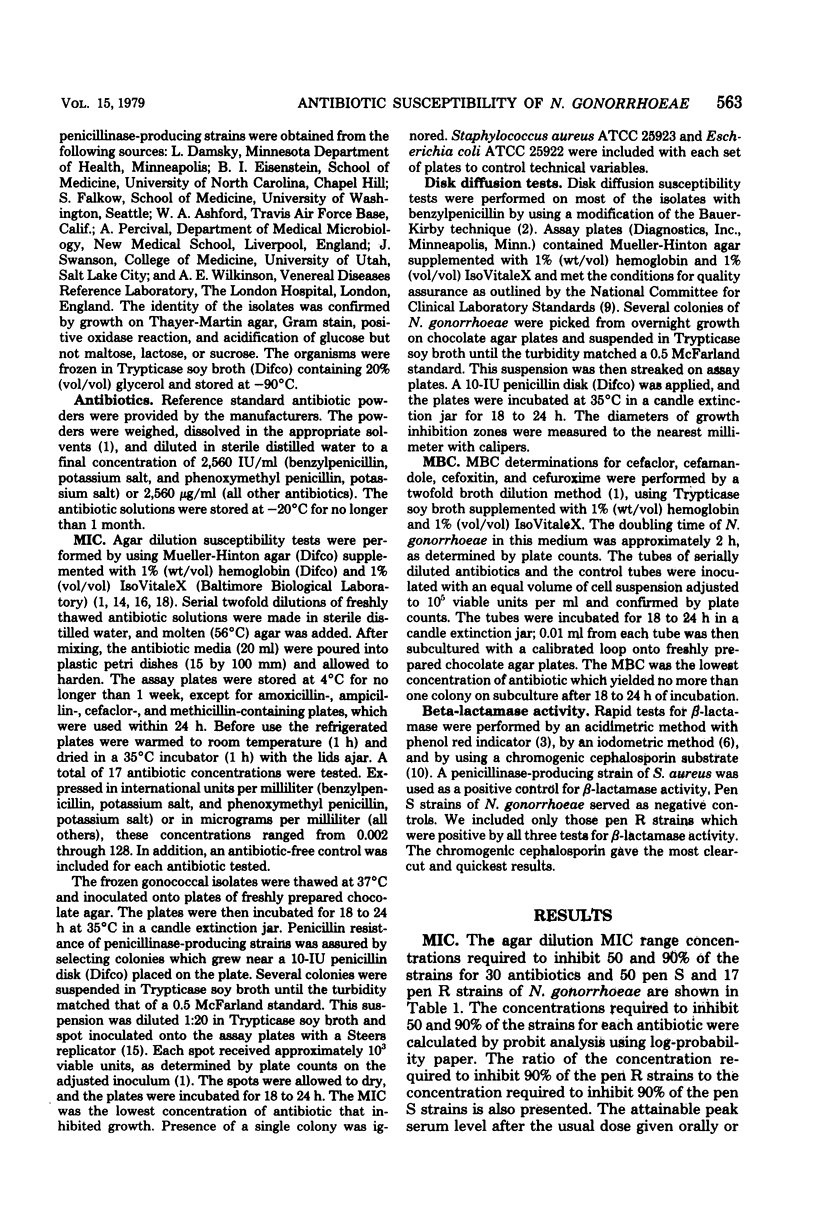
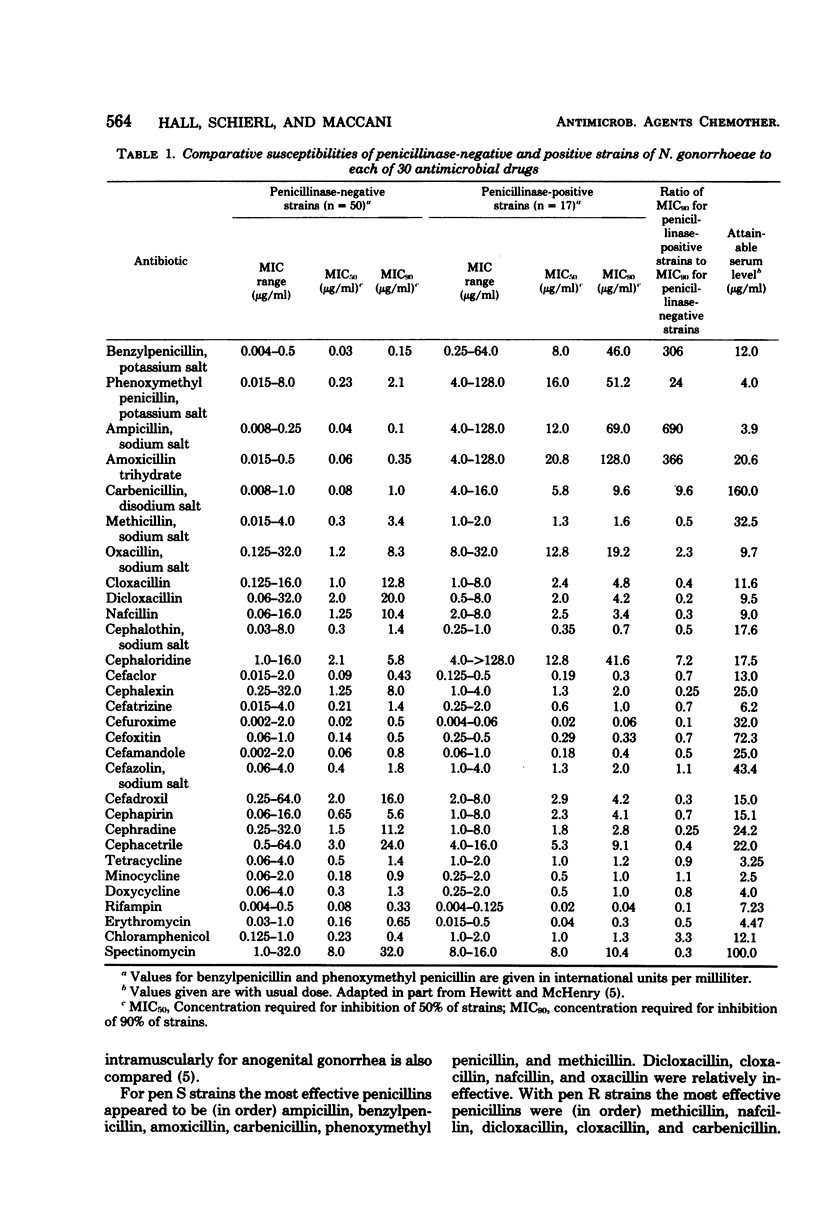
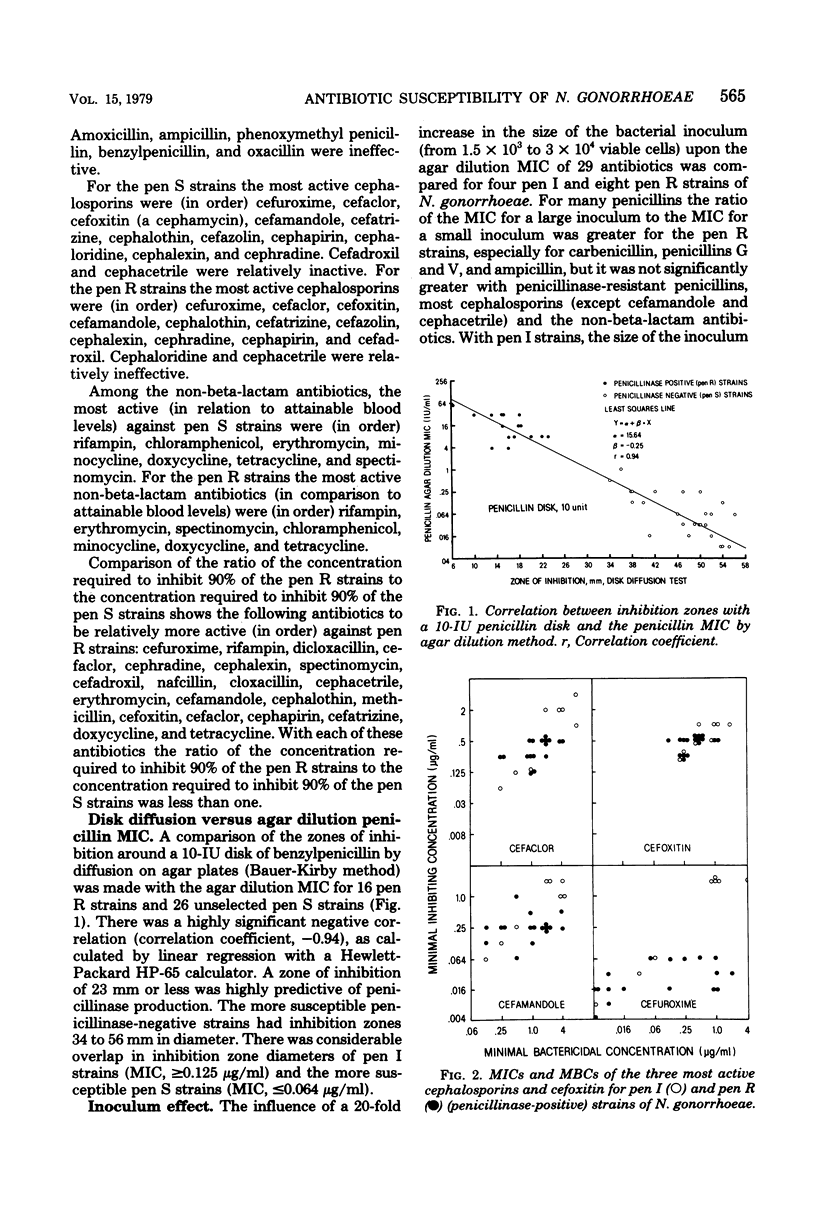
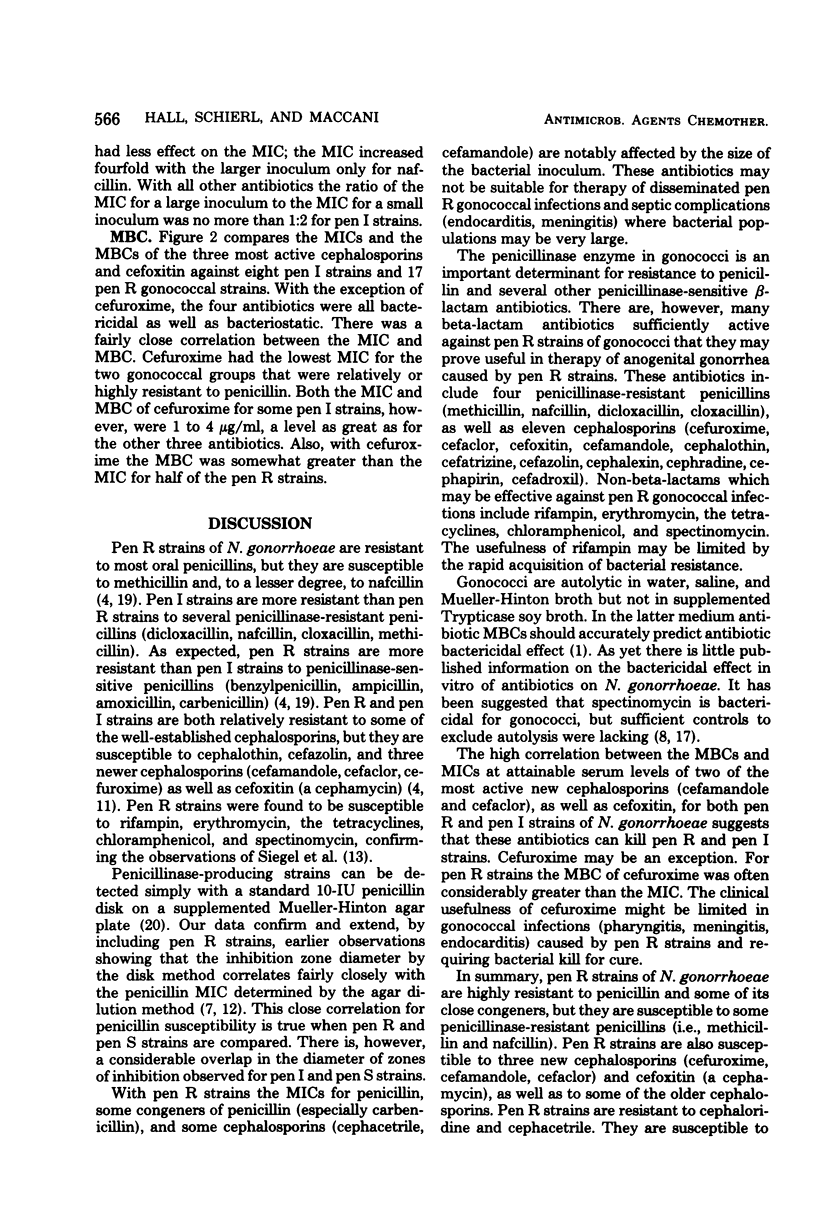

Selected References
These references are in PubMed. This may not be the complete list of references from this article.
- Bauer A. W., Kirby W. M., Sherris J. C., Turck M. Antibiotic susceptibility testing by a standardized single disk method. Am J Clin Pathol. 1966 Apr;45(4):493–496. [PubMed] [Google Scholar]
- Escamilla J. Susceptibility of Haemophilus influenza to ampicillin as determined by use of a modified, one-minute beta-lactamase test. Antimicrob Agents Chemother. 1976 Jan;9(1):196–198. doi: 10.1128/aac.9.1.196. [DOI] [PMC free article] [PubMed] [Google Scholar]
- Finland M., Garner C., Wilcox C., Sabath L. D. Susceptibility of Neisseria gonorrhoeae to 66 antibacterial agents in vitro. J Am Vener Dis Assoc. 1976 Mar;2(3):33–40. [PubMed] [Google Scholar]
- Hewitt W. L., McHenry M. C. Blood level determinations of antimicrobial drugs. Some clinical considerations. Med Clin North Am. 1978 Sep;62(5):1119–1140. doi: 10.1016/s0025-7125(16)31758-8. [DOI] [PubMed] [Google Scholar]
- Jorgensen J. H., Lee J. C., Alexander G. A. Rapid penicillinase paper strip test for detection of beta-lactamase-producing Haemophilus influenzae and Neisseria gonorrhoeae. Antimicrob Agents Chemother. 1977 Jun;11(6):1087–1088. doi: 10.1128/aac.11.6.1087. [DOI] [PMC free article] [PubMed] [Google Scholar]
- Juhlin I. Problems in diagnosis, treatment and control of gonorrheal infections. II. Routine sensitivity tests with the plate dilution and disc methods. Acta Derm Venereol. 1965;45(3):223–230. [PubMed] [Google Scholar]
- Levy J., Wicher K., Rose N. R. In vitro susceptibility of Neisseria gonorrhoeae to spectinomycin examined by a broth dilution method. Antimicrob Agents Chemother. 1973 Mar;3(3):335–337. doi: 10.1128/aac.3.3.335. [DOI] [PMC free article] [PubMed] [Google Scholar]
- O'Callaghan C. H., Morris A., Kirby S. M., Shingler A. H. Novel method for detection of beta-lactamases by using a chromogenic cephalosporin substrate. Antimicrob Agents Chemother. 1972 Apr;1(4):283–288. doi: 10.1128/aac.1.4.283. [DOI] [PMC free article] [PubMed] [Google Scholar]
- Phillips I., King A., Warren C., Watts B. The activity of penicillin and eight cephalosporins on Neisseria gonorrhoeae. J Antimicrob Chemother. 1976 Mar;2(1):31–39. doi: 10.1093/jac/2.1.31. [DOI] [PubMed] [Google Scholar]
- Siegel M. S., Thornsberry C., Biddle J. W., O'Mara P. R., Perine P. L., Wiesner P. J. Penicillinase-producing Neisseria gonorrhoeae: results of surveillance in the United States. J Infect Dis. 1978 Feb;137(2):170–175. doi: 10.1093/infdis/137.2.170. [DOI] [PubMed] [Google Scholar]
- Snyder R. J., Kohner P. C., Ilstrup D. M., Washington J. A., 2nd Analysis of certain variables in the agar dilution susceptibility test. Antimicrob Agents Chemother. 1976 Jan;9(1):74–76. doi: 10.1128/aac.9.1.74. [DOI] [PMC free article] [PubMed] [Google Scholar]
- Ward M. E. The bactericidal action of spectinomycin on Neisseria gonorrhoeae. J Antimicrob Chemother. 1977 Jul;3(4):323–329. doi: 10.1093/jac/3.4.323. [DOI] [PubMed] [Google Scholar]
- Watts B. A., Phillips I., Stoate M. W. The in vitro activity of 15 penicillins and mecillinam against Neisseria gonorrhoeae. J Antimicrob Chemother. 1977 Jul;3(4):331–337. doi: 10.1093/jac/3.4.331. [DOI] [PubMed] [Google Scholar]
- Wilkinson A. E. The sensitivity of gonococci to penicillin. J Antimicrob Chemother. 1977 May;3(3):197–198. doi: 10.1093/jac/3.3.197. [DOI] [PubMed] [Google Scholar]


